A map on a barrel outside the Stone Store piqued my interest. “Travel the old trade route,” it said, showing the locations of early Christian mission properties dotted across the countryside from the Bay of Islands to the Hokianga Harbour.
Being Northlanders, we’ve visited these places over the years but we decided it was high time to revisit and see what was new. I picked up the Historic Northland brochure and we began our tour. The reference to trade is evident at the Stone Store; it was built as a storehouse and opened for business in 1836.
Nowadays, the ground floor of the building is a combination of museum and shop. The storekeepers are dressed in period costume, and the items for sale are authentic trade goods, like those sold here a hundred or more years ago. There are agricultural tools, ladles, bolts of cloth, barrels, jute sacks and much more.
In the adjacent room are quaint reproduction posters, toys, games, books - everything with a Victorian or retro vibe. It’s the sort of place in which you could spend hours browsing. The Stone Store’s two upper floors are the museum proper. We are members of Heritage New Zealand so were waved through.
After removing our shoes to help preserve the wooden flooring, we went up windy stairs to the second floor. There is a reference library here, with files of information on the early missionary families and their lives - a historian and genealogist’s delight.
Then, after peering down through the glassed-over trapdoor to the store below, we perused information panels outlining the history of the Stone Store, Kemp House, the missionaries who lived there and the Māori chiefs who watched over them.
Ten years later, the Kemp family moved in, and they stayed on after the mission closed in 1848. Amazingly, Kemp descendants continued to live in the house until 1974, when the house and contents were presented to New Zealand Historic Places Trust, now Heritage New Zealand.
The interior of Kemp House is little changed from its original state. The locally milled wide Kauri boards are painted; the floors have rugs and mats. The last Kemps to live in the house were elderly spinsters who kept things as they were in their grandparents’ day.
It is easy to picture the missionary families going about their daily lives – what is harder to imagine are the hundreds, and on occasion thousands, of troops preparing for war right outside the front door. Since the Kerikeri Basin was bypassed in 2008, the area has become a haven.
Moored yachts are reflected in the water; children feed ducks while their parents enjoy a drink or meal in one of the cafés. Besides the aptly-named Pear Tree restaurant is New Zealand’s oldest remaining pear tree, planted 200 years ago and still thriving. Behind the café is a track to Kororipo Pā, once Hongi Hika’s stronghold, now an empty hillside, topped by palisades and information panels.
Next on our itinerary was Russell, a ferry ride from Opua. Back in the early 1800s, Māori and settlers, whalers, sealers and missionaries were all mingling in the Bay of Islands. Māori were keen to trade with the Europeans and to sample their new technologies and foodstuffs (although many just wanted muskets).
Russell was so rough and rowdy it became known as the ‘hell-hole of the Pacific’. Now its quiet streets are home to cafés and shops, its old buildings neatly painted - the little town is more paradise than hell. Russell is also home to the Pompallier Mission, named after Bishop Pompallier who established a Catholic mission station here in 1839.
Over the next decade, the brothers built a residence, dormitory, chapel, cookhouse and the surviving building - now known as the Mission House. In reality, this building was where religious tracts and books were produced. It housed a tannery, currier’s workshop, composition (type-setting), binding and printing rooms.
Unlike the English mission houses, which were Georgian-style wooden buildings, the French built a two-storey, rammed-earth structure. Pompallier House looks like a little piece of France. Surrounded by gardens with heritage fruit trees and flower beds, and facing the beach where waves gently lap and boats bob at anchor, everything was serene when we arrived.
I half expected to see a robed priest flit between the trees. We were just in time for a tour. This turned out to be excellent. Our guide spent 45 minutes explaining how the mission developed and how the Marists produced the books they used to spread their Catholic beliefs. In pits behind the house, hides are processed in urine as they were in days past.
Our guide told us that just one small hide produced a stench she could smell from the gatehouse. Luckily, the skins we saw were further along in the process, being stretched and dried. This leather was for the book covers.
In a downstairs room, known to the guides as the ‘workout room’, the brothers used to treat the leather by putting it on a frame they walked on while using rollers on their arms to further treat other hides.
There was other equipment in this gym-like room, but we were told that one brother got to ‘skive off’. The skive, a sharp tool that cut and smoothed leather, was not as physically demanding to use, though it required a skilled hand.
Upstairs we saw the old printing presses, late 16th- and early 17th-century technology and out of date even when they were brought to New Zealand. We saw how the printers used to ‘coin a phrase’, the quoin being a wedge that held the type in place, then they ‘cut (the paper) to the chase’ before making a ‘first impression’. Many of our everyday expressions and words owe a lot to this printing process.
On another day we headed west along the old missionary route (New Zealand’s first road) from Kerikeri to Waimate North. Our destination was the mission known as Te Waimate. This was the Church Missionary Society’s model farm, founded in 1830 by Samuel Marsden with the encouragement of local Ngāpuhi, who were keen to learn the benefits of agriculture.
Charles Darwin was an early visitor. He had been unimpressed with vice-ridden Russell and the scrubby ‘useless’ scenery between Paihia and Waimate. Then he got a pleasant surprise - he saw an English-style settlement with tidy fields, fruit trees and all the signs of English civilisation: tea and cricket on the lawn.
Nowadays Waimate North is a sleepy crossroads with almost all the mission buildings gone. The church of St John the Baptist is surrounded by its graveyard where early missionaries and settler families were laid to rest.
There are also graves of British soldiers who died fighting Māori during the Northern Wars. Beside the church is the only remaining house from the mission era, the ‘old vicarage’ built by George Clarke in 1831 (the second-oldest wooden building in New Zealand).
There are spacious rooms inside, though it is hard to imagine where George and Martha’s 13 children found a place to go to bed. In the mission grounds are the sites of other homesteads, schools and cottages, although all that is left now are mounds and hollows.
We continued on our discovery of the old trade route by heading to the Hokianga Harbour. Just past the sleepy settlement of Hōreke, once one of New Zealand’s first shipyards, we came to Mangungu Mission House. This was a Wesleyan venture, established in 1828, with the present house built just before the signing of the Treaty of Waitangi.
After Waitangi, the treaty was taken around the country and, at Mangungu, the most significant signing took place. There were between 2000 and 3000 Māori present that day and 700 chiefs debated and signed the document.
Later, the mission at Mangungu was disbanded, and the house moved to Onehunga in Auckland where it was used as a Methodist manse. In the 1970s, the building was returned to Mangungu and restored by Heritage New Zealand.
Inside the house are relics of missionary days with portraits of the missionaries and their Māori protector, Patuone. The house is on the rise overlooking the Hokianga Harbour and has a historic cemetery where I discovered that many early settlers and visitors sadly died by drowning.
There is a tiny church and also a wonderful (fully wallpapered) long-drop toilet. We were the only visitors on this occasion, although it is interesting to visit on February 12 (as we have done in the past) since this is the date the mission commemorates the treaty signing.
Mangungu, like Te Waimate, Pompallier, the Stone Store and Kemp House are all owned and maintained by Heritage New Zealand. Opening hours vary, but admission is free for Heritage New Zealand members. We found the guided tours at Kemp House and Pompallier Mission fascinating. Following the old trade route gave us the perfect excuse to explore the Bay of Islands and the Hokianga Harbour.
Find more motorhomes, RVs and caravans for sale in NZ
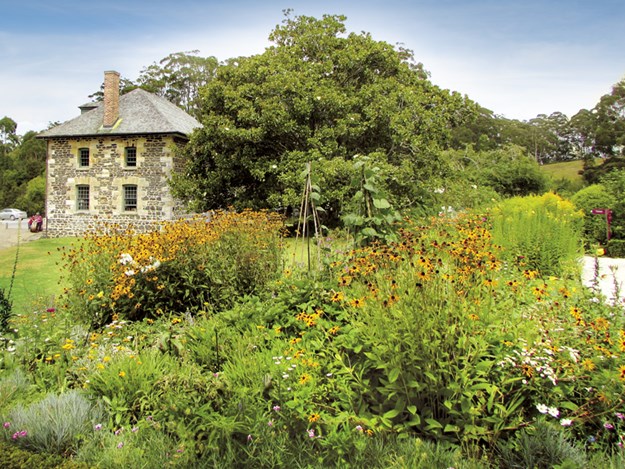 |
|
Stone Store. Kerikeri |
Nowadays, the ground floor of the building is a combination of museum and shop. The storekeepers are dressed in period costume, and the items for sale are authentic trade goods, like those sold here a hundred or more years ago. There are agricultural tools, ladles, bolts of cloth, barrels, jute sacks and much more.
In the adjacent room are quaint reproduction posters, toys, games, books - everything with a Victorian or retro vibe. It’s the sort of place in which you could spend hours browsing. The Stone Store’s two upper floors are the museum proper. We are members of Heritage New Zealand so were waved through.
After removing our shoes to help preserve the wooden flooring, we went up windy stairs to the second floor. There is a reference library here, with files of information on the early missionary families and their lives - a historian and genealogist’s delight.
Then, after peering down through the glassed-over trapdoor to the store below, we perused information panels outlining the history of the Stone Store, Kemp House, the missionaries who lived there and the Māori chiefs who watched over them.
A snapshot of settler life
The Stone Store is the country’s oldest surviving stone building and adjacent Kemp House is the oldest European wooden building. The two buildings are all that remains of the Church Missionary Society’s mission to New Zealand, founded in 1819. Kemp House was built in 1821.Ten years later, the Kemp family moved in, and they stayed on after the mission closed in 1848. Amazingly, Kemp descendants continued to live in the house until 1974, when the house and contents were presented to New Zealand Historic Places Trust, now Heritage New Zealand.
The interior of Kemp House is little changed from its original state. The locally milled wide Kauri boards are painted; the floors have rugs and mats. The last Kemps to live in the house were elderly spinsters who kept things as they were in their grandparents’ day.
It is easy to picture the missionary families going about their daily lives – what is harder to imagine are the hundreds, and on occasion thousands, of troops preparing for war right outside the front door. Since the Kerikeri Basin was bypassed in 2008, the area has become a haven.
Moored yachts are reflected in the water; children feed ducks while their parents enjoy a drink or meal in one of the cafés. Besides the aptly-named Pear Tree restaurant is New Zealand’s oldest remaining pear tree, planted 200 years ago and still thriving. Behind the café is a track to Kororipo Pā, once Hongi Hika’s stronghold, now an empty hillside, topped by palisades and information panels.
A French-style tannery and printery
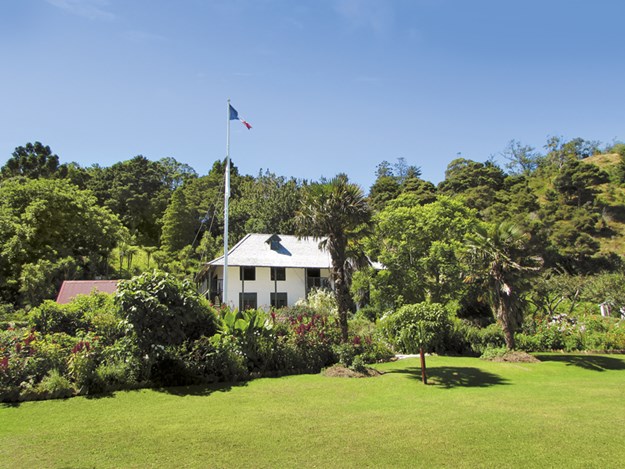 |
|
Pompallier House |
Russell was so rough and rowdy it became known as the ‘hell-hole of the Pacific’. Now its quiet streets are home to cafés and shops, its old buildings neatly painted - the little town is more paradise than hell. Russell is also home to the Pompallier Mission, named after Bishop Pompallier who established a Catholic mission station here in 1839.
Over the next decade, the brothers built a residence, dormitory, chapel, cookhouse and the surviving building - now known as the Mission House. In reality, this building was where religious tracts and books were produced. It housed a tannery, currier’s workshop, composition (type-setting), binding and printing rooms.
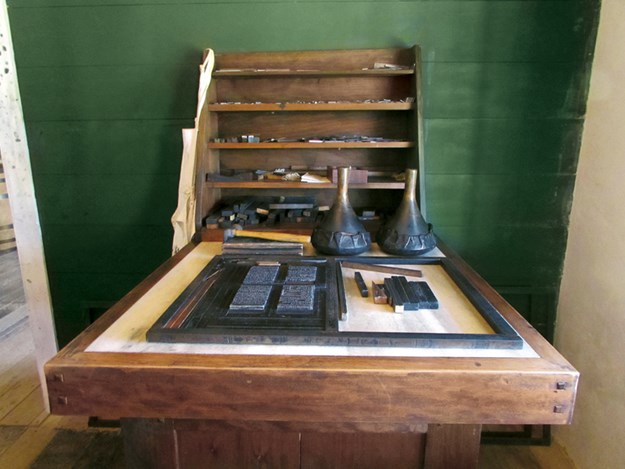 |
|
Printing equipment, ready to coin a phrase, at Pompallier House |
I half expected to see a robed priest flit between the trees. We were just in time for a tour. This turned out to be excellent. Our guide spent 45 minutes explaining how the mission developed and how the Marists produced the books they used to spread their Catholic beliefs. In pits behind the house, hides are processed in urine as they were in days past.
Our guide told us that just one small hide produced a stench she could smell from the gatehouse. Luckily, the skins we saw were further along in the process, being stretched and dried. This leather was for the book covers.
In a downstairs room, known to the guides as the ‘workout room’, the brothers used to treat the leather by putting it on a frame they walked on while using rollers on their arms to further treat other hides.
There was other equipment in this gym-like room, but we were told that one brother got to ‘skive off’. The skive, a sharp tool that cut and smoothed leather, was not as physically demanding to use, though it required a skilled hand.
Upstairs we saw the old printing presses, late 16th- and early 17th-century technology and out of date even when they were brought to New Zealand. We saw how the printers used to ‘coin a phrase’, the quoin being a wedge that held the type in place, then they ‘cut (the paper) to the chase’ before making a ‘first impression’. Many of our everyday expressions and words owe a lot to this printing process.
West to Waimate
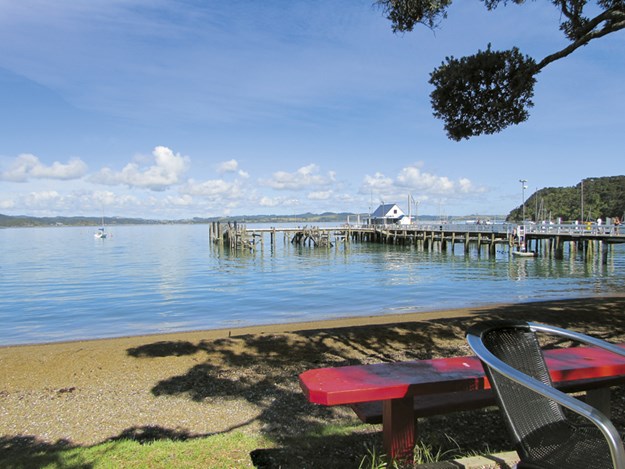 |
|
Russell Wharf |
Charles Darwin was an early visitor. He had been unimpressed with vice-ridden Russell and the scrubby ‘useless’ scenery between Paihia and Waimate. Then he got a pleasant surprise - he saw an English-style settlement with tidy fields, fruit trees and all the signs of English civilisation: tea and cricket on the lawn.
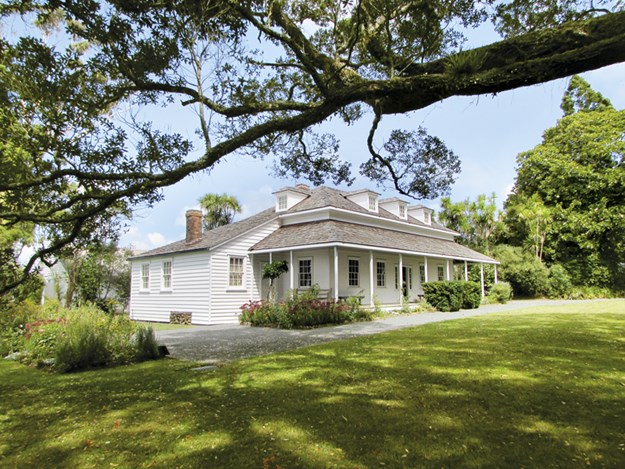 |
|
Georgian architecture at Te Waimate Mission Station |
There are also graves of British soldiers who died fighting Māori during the Northern Wars. Beside the church is the only remaining house from the mission era, the ‘old vicarage’ built by George Clarke in 1831 (the second-oldest wooden building in New Zealand).
There are spacious rooms inside, though it is hard to imagine where George and Martha’s 13 children found a place to go to bed. In the mission grounds are the sites of other homesteads, schools and cottages, although all that is left now are mounds and hollows.
Historic Hōreke
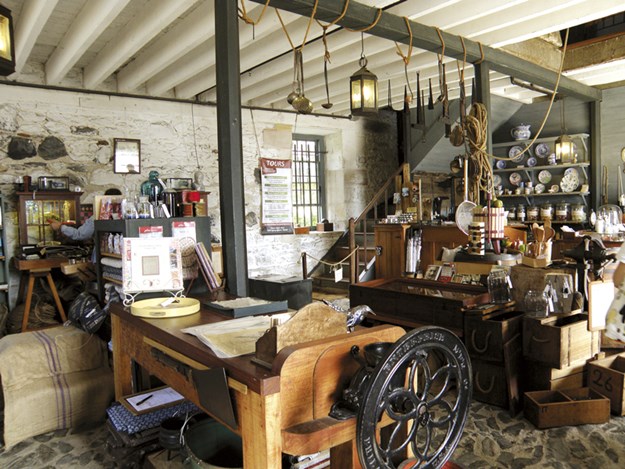 |
|
Inside the store |
After Waitangi, the treaty was taken around the country and, at Mangungu, the most significant signing took place. There were between 2000 and 3000 Māori present that day and 700 chiefs debated and signed the document.
Later, the mission at Mangungu was disbanded, and the house moved to Onehunga in Auckland where it was used as a Methodist manse. In the 1970s, the building was returned to Mangungu and restored by Heritage New Zealand.
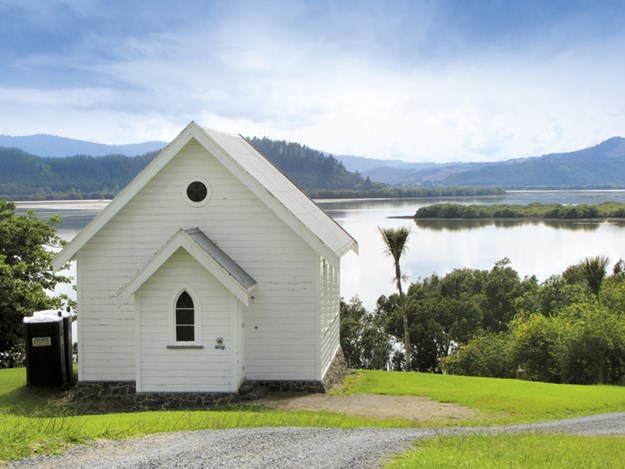 |
|
Mangungu Church |
There is a tiny church and also a wonderful (fully wallpapered) long-drop toilet. We were the only visitors on this occasion, although it is interesting to visit on February 12 (as we have done in the past) since this is the date the mission commemorates the treaty signing.
Mangungu, like Te Waimate, Pompallier, the Stone Store and Kemp House are all owned and maintained by Heritage New Zealand. Opening hours vary, but admission is free for Heritage New Zealand members. We found the guided tours at Kemp House and Pompallier Mission fascinating. Following the old trade route gave us the perfect excuse to explore the Bay of Islands and the Hokianga Harbour.
Further Information
- There are a variety of places for motorhomers to stay when exploring the area, with a range of commercial campgrounds in Kerikeri and the Bay of Islands (though only one on the Hokianga Harbour) and, for NZMCA members, the park at Rainbow Falls, Kerikeri. In the Hokianga, we parked at the Horeke Tavern and at Waimate North we stayed at the showgrounds. At Russell, we stayed at a Park Over Property.
- Information about the old trade route in the Bay of Islands and Hokianga can be obtained at visitheritage.org.nz. Other useful websites are: kerikeri.co.nz; russellnz.co.nz; hokianga.com
- Visitor information i-SITES are located at Kerikeri: 460 Kerikeri Road Russell: on the wharf
- Paihia: on the wharf
- Hokianga: 29 SH12, Opononi
Find more motorhomes, RVs and caravans for sale in NZ





